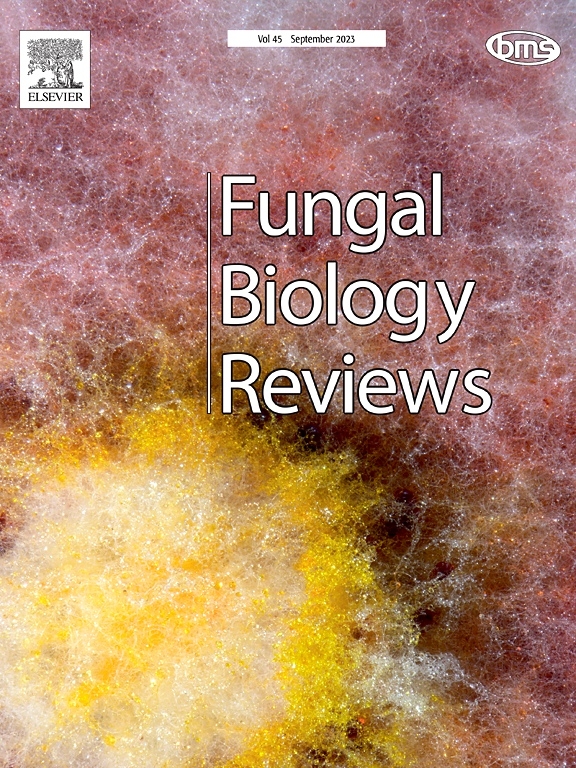Pseudocercospora fijiensis and Pseudocercospora musae: Understanding the relationship between biology and epidemiology
IF 4.6
2区 生物学
Q1 MYCOLOGY
引用次数: 0
Abstract
The complex of Sigatoka diseases encompasses the most destructive leaf diseases affecting banana plants (Musa spp.). Among these the Yellow Sigatoka and Black Sigatoka, caused by the fungi Pseudocercospora musae and Pseudocercospora fijiensis, respectively, outstand as the most severe. In a scenario marked by the presence of both diseases, Black Sigatoka has prevailed, indicating that this is more severe than Yellow Sigatoka. Aiming to understand the ecological behaviour of both fungi and the evolutionary characteristics that make Black Sigatoka more aggressive, the present study aims to review and analyse the epidemiological relationship exerted in the pathosystem involving P. fijiensis and P. musae fungi, discuss the environmental, genetic and epidemiological factors which contribute to determine the adaptive value and competitive ability that explain the predominance of Black Sigatoka over Yellow Sigatoka. Our review showed that particular features such as higher rate of lesions expansion, increased production of sexual spores, precociousness of sexual cycles, greater thermal amplitude for disease development, predominance of epiphytic colonization and production of phytotoxins associated with pathogenicity are some of the adaptations that P. fijiensis noticeably accumulates, which are decisive for its competitive capacity.
斐济伪麻孢子虫和musae伪麻孢子虫:了解生物学和流行病学之间的关系
香蕉叶斑病复合体包括影响香蕉植物(Musa spp.)的最具破坏性的叶片疾病。其中,由musae Pseudocercospora和fijiensis Pseudocercospora引起的黄斑病和黑斑病最为严重。在两种疾病都存在的情况下,黑色斑纹占了上风,这表明这种斑纹比黄色斑纹更严重。为了了解黑叶斑病的生态行为和进化特征,本研究旨在回顾和分析斐济黑叶斑病和musae黑叶斑病在病理系统中的流行病学关系,讨论环境、遗传和流行病学因素对黑叶斑病的适应价值和竞争能力的影响,从而解释黑叶斑病对黄叶斑病的优势。我们的综述表明,斐济假单胞菌明显积累的一些适应性特征,如更高的病变扩张率、性孢子的产生增加、性周期的早熟、疾病发展的更大热振幅、附生定植的优势以及与致病性相关的植物毒素的产生,这些特征对其竞争能力起着决定性作用。
本文章由计算机程序翻译,如有差异,请以英文原文为准。
求助全文
约1分钟内获得全文
求助全文
来源期刊

Fungal Biology Reviews
MYCOLOGY-
CiteScore
10.60
自引率
0.00%
发文量
36
期刊介绍:
Fungal Biology Reviews is an international reviews journal, owned by the British Mycological Society. Its objective is to provide a forum for high quality review articles within fungal biology. It covers all fields of fungal biology, whether fundamental or applied, including fungal diversity, ecology, evolution, physiology and ecophysiology, biochemistry, genetics and molecular biology, cell biology, interactions (symbiosis, pathogenesis etc), environmental aspects, biotechnology and taxonomy. It considers aspects of all organisms historically or recently recognized as fungi, including lichen-fungi, microsporidia, oomycetes, slime moulds, stramenopiles, and yeasts.
 求助内容:
求助内容: 应助结果提醒方式:
应助结果提醒方式:


